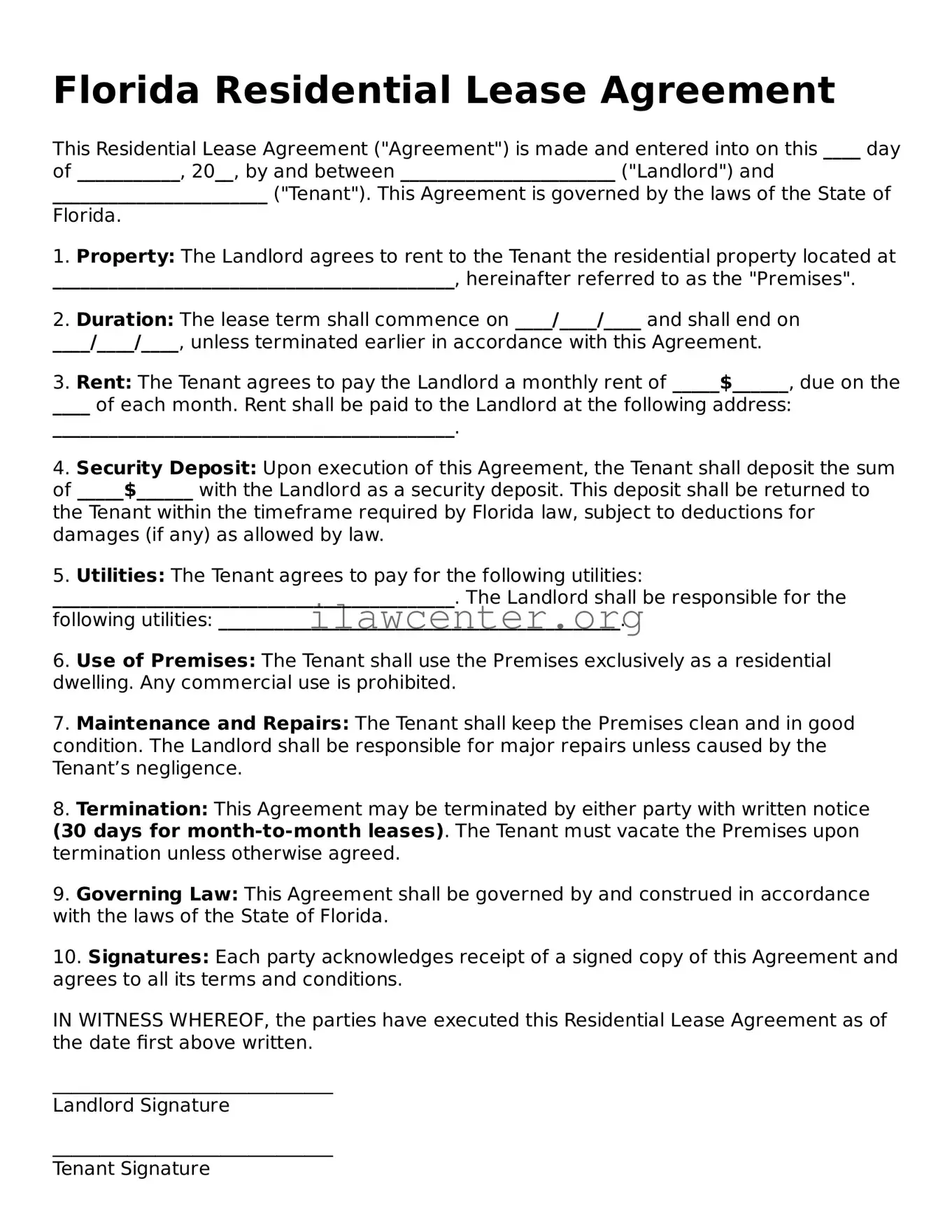Instructions on Utilizing Florida Residential Lease Agreement
After obtaining the Florida Residential Lease Agreement form, you will need to carefully complete it to establish clear rental terms. Follow these steps to ensure accurate and complete information is provided.
- Identify the Parties: Enter the full names of the landlord and tenant(s) at the beginning of the form. Make sure to use the correct legal names.
- Property Details: Provide the complete address of the rental property, including unit number, if applicable.
- Lease Term: Specify the duration of the lease, including the start and end dates. Indicate whether it's a fixed-term lease or a month-to-month lease.
- Rental Amount: Write in the monthly rent amount. Include details about due dates and acceptable payment methods.
- Security Deposit: State the amount of the security deposit. Clarify conditions for its return and any deductions that may be made.
- Utilities: List the utilities that are included in the rent and those for which the tenant is responsible.
- Pet Policy: If applicable, include any pet policies. This might involve specifying breed restrictions or additional fees.
- Signatures and Dates: Both landlord and tenant(s) must sign and date the form to make it legally binding. Ensure that all signatures are legible.
Once the form is completely filled out, provide copies to all parties involved. It’s recommended to keep one for personal records as well. This will help ensure all parties are clear on the agreement terms.
